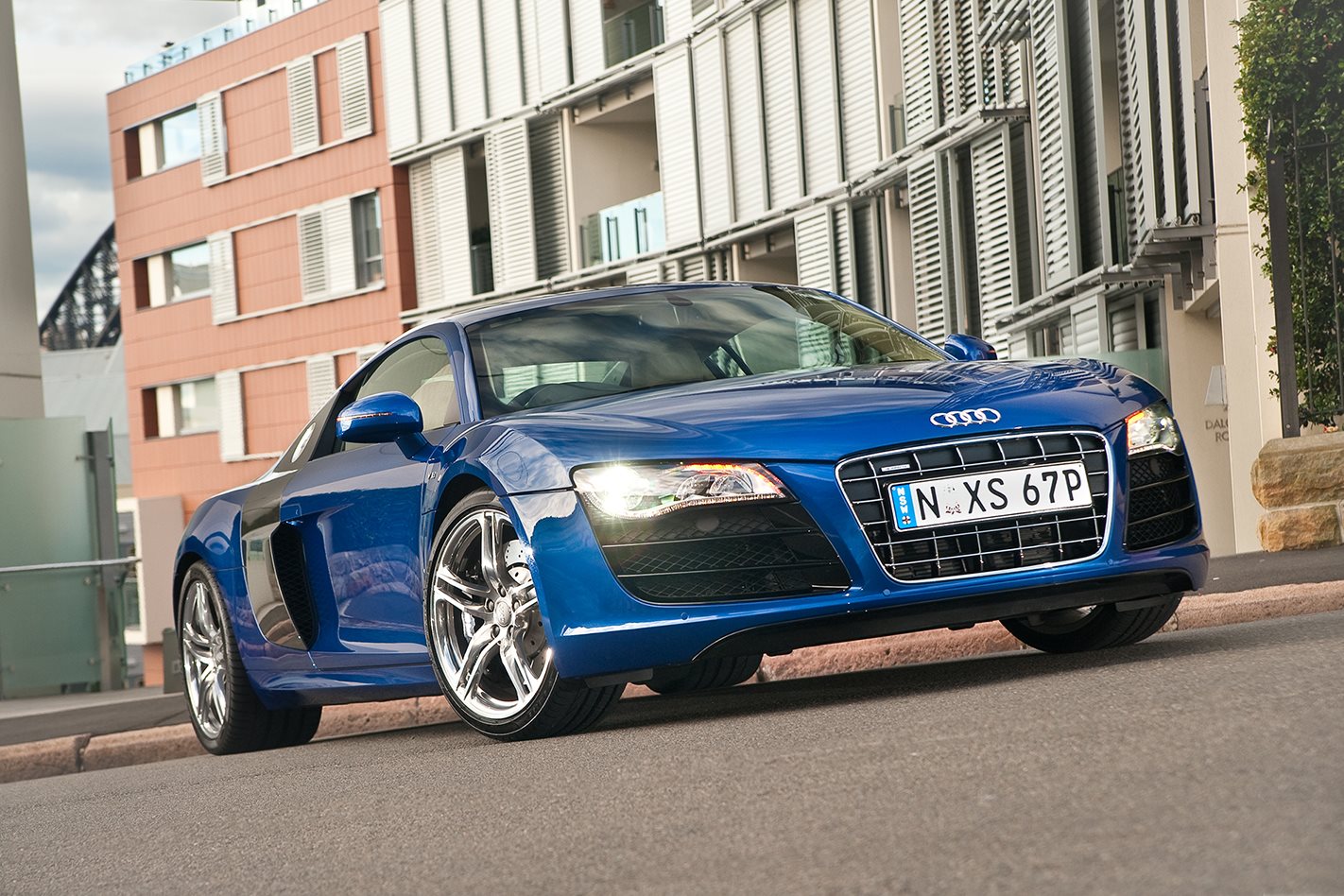Audi R8
Ingolstadt rediscovers vehicle dynamics I’ll never forget laughing right in the face of a lovely Audi PR lady after they’d taken us to see Will Smith’s I, Robot (not a biopic about his acting ability, sadly).
We’d been dragged along to enjoy the few minutes of footage featuring a futuristic and fantastic-looking Audi, and when we asked why they’d bothered she told us – straight-faced – that we were getting a preview look at one of their new cars.
I think a little bit of spit came out and hit her in the face, which is embarrassing, but really, how was I to know that Audi had already designed the R8 by then (2004), and would go on to actually sell it in 2007?
Germans don’t – or didn’t – make supercars. Only Italians and some mad Nordics go in for that kind of business, so it wasn’t as if Audi would actually release something that amazing-looking.
But build it they did, and its very existence lifted the world’s appreciation for the brand no end. Merc (SLS) and BMW (i8) have since paid it the ultimate compliment by joining the supercar club as well.
Perhaps the cleverest thing Audi did with the R8, though, and another way it broke the mould entirely, was borrowing a proper, rip-snorting V10 engine from its sister company, supercar legend Lamborghini. The 5.2 FSI quattro was unveiled in December 2008, and for the first time it combined Germanic perfection and exactitude with a soulful and superb Italian heart.
The R8 e-tron could even be said to have followed in its mould-breaking footsteps.
PLUS: Better than the movie it debuted in and, particularly with an open-gate manual, more of a collector’s item. MINUS: It still can’t drive itself like Will Smith’s Audi in the movie did… but, that may well be its next trick.
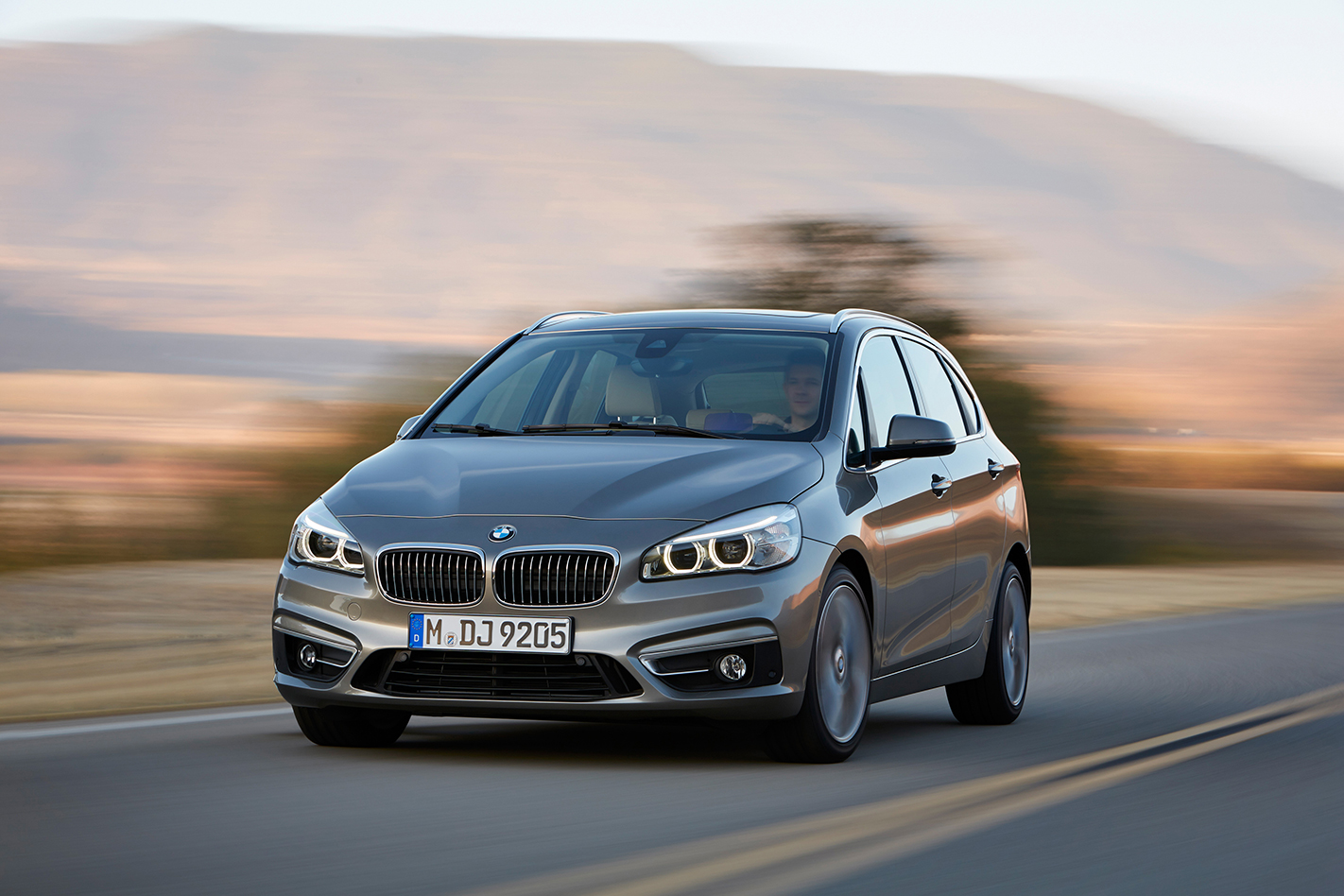
BMW 2 Series Active Tourer
Dispatch it to the front TWO words that car company executives should never, ever use are “never” and “ever”.
And yet those of us with fully functioning memories can clearly recall those very words being forcefully put many, many Mini launches ago, when someone dared to ask whether BMW would ever consider using the front-wheel-drive layout it was now so clearly capable of engineering in a car wearing the famous blue and white roundel.
The company would “never, ever” do such a thing, we were told, because only rear-wheel drive can provide “pure driving pleasure” and BMWs are, and always will be, the “ultimate driving machine”.
But diversification, niche mining, dumbing down, whatever you want to call it, has caused a lot of car companies to do a lot of things that previous executives may have found unpalatable (or possibly knew full well were going to happen but preferred not to talk about).
And thus BMW now finds itself making a tall, compact family wagon, which appeals to the kind of buyers who give not one toss whether the engine is driving the front wheels, the rear ones or a hamster wheel. They just want passenger space, visibility, a premium cabin and an expensive badge on their noses.
The Active Tourer has nailed all that, but it has also driven a stake through the heart of the company, from a purist point of view. It has defied its driving pleasure mission statement and made all the things BMW has said about other companies’ cars being inferior because of their front-driveness look extremely silly indeed.
The tall 2 Series might wear the BMW badge, but it will never drive like one, and thus it has shattered Munich’s drivetrain mould forever.
PLUS: People will buy it, which makes BMW money it can then spend on the M235is and M3s of the future. MINUS: When your brand stands for rear-wheel-drive purity, it’s possibly not a good idea to ignore your own advice.
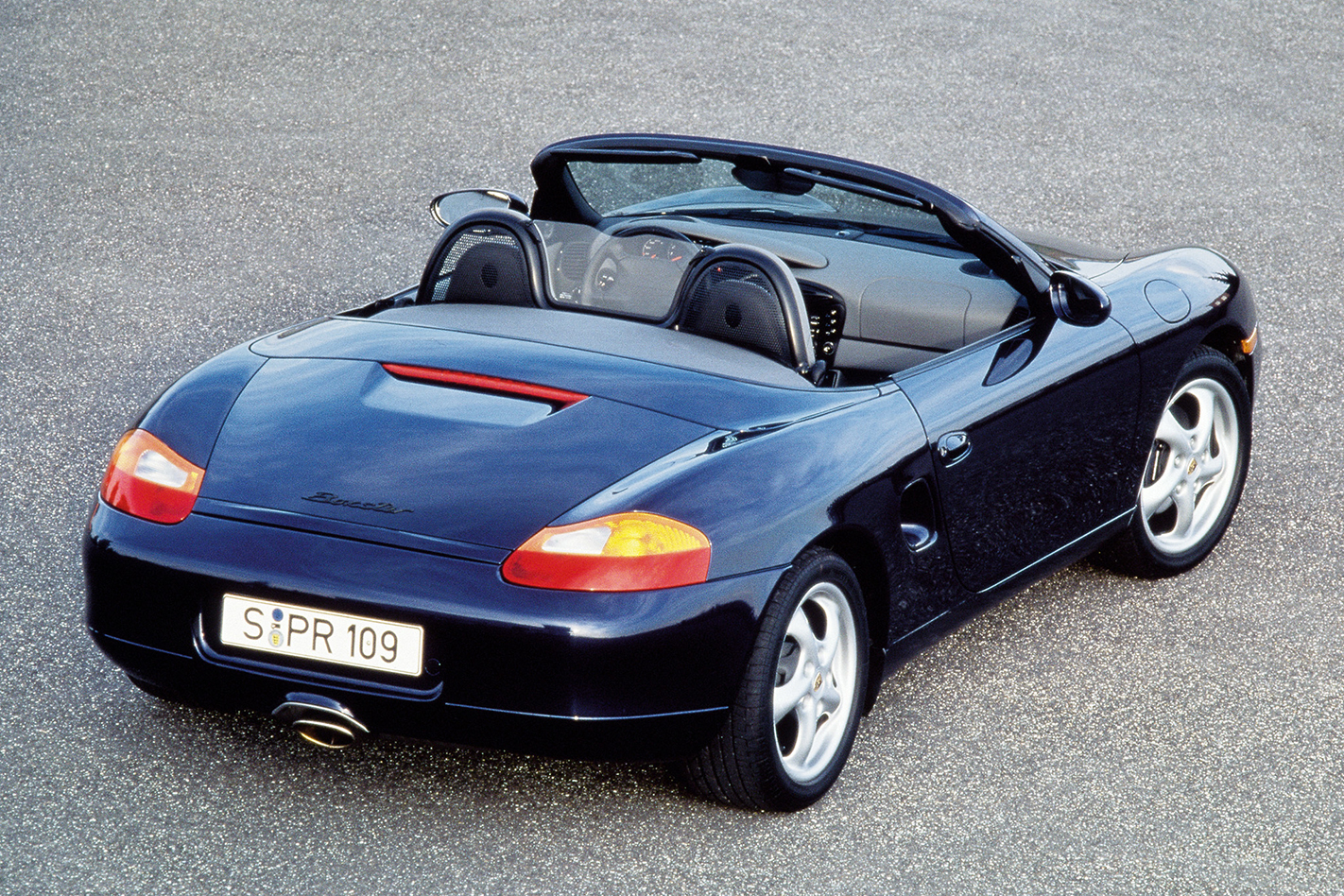
Porsche Boxster
A bit off the top, please Although Porsche had a sneaky habit of bringing us occasional girly looking, essentially soft cars before the Boxster was launched in 1996 – think the 914 and 924 – this was the car that effectively saved the teetering company from folding.
You could thank the Coxster – just one of its cruel nicknames, but not as common as “poor man’s Porsche” – for turning the Stuttgart-based former sports car company into the SUV-selling giant it is today.
Sure, the original Boxster (it’s a clever mix of “boxer”, as in engine, and “roadster”) took 7.6sec to get to 100km/h using its appalling yet innovative Tiptronic gearbox, and next to a 911 it was about as soft as a cup of Milo next to a block of chocolate, but it sure did part a lot of hairdressers from their hard-earned.
And plenty of people with less-chatty jobs, too, because it suddenly made the Porsche badge seem almost attainable, at least to the kind of people who were well off, if not quite 911-rich.
Critics at the time said it was cheapening the brand and was the death of the company’s purist creed, but the fact was that, while softer than a proper Porsche, it was still pretty bloody fabulous to drive. A Boxster won Motor’s PCOTY in 1997.
There’s nothing girly about the latest and greatest 981 version of the Boxster; it’s just plain wonderful. We can also thank the Boxster for giving birth to the Cayman, which is wonderful with sugar on top.
PLUS: Brought Porsche ownership to more bankers (or something that sounds like that) than ever before. MINUS: Put Porsche back towards profitability and thus further model experimentation. And the Cayenne.
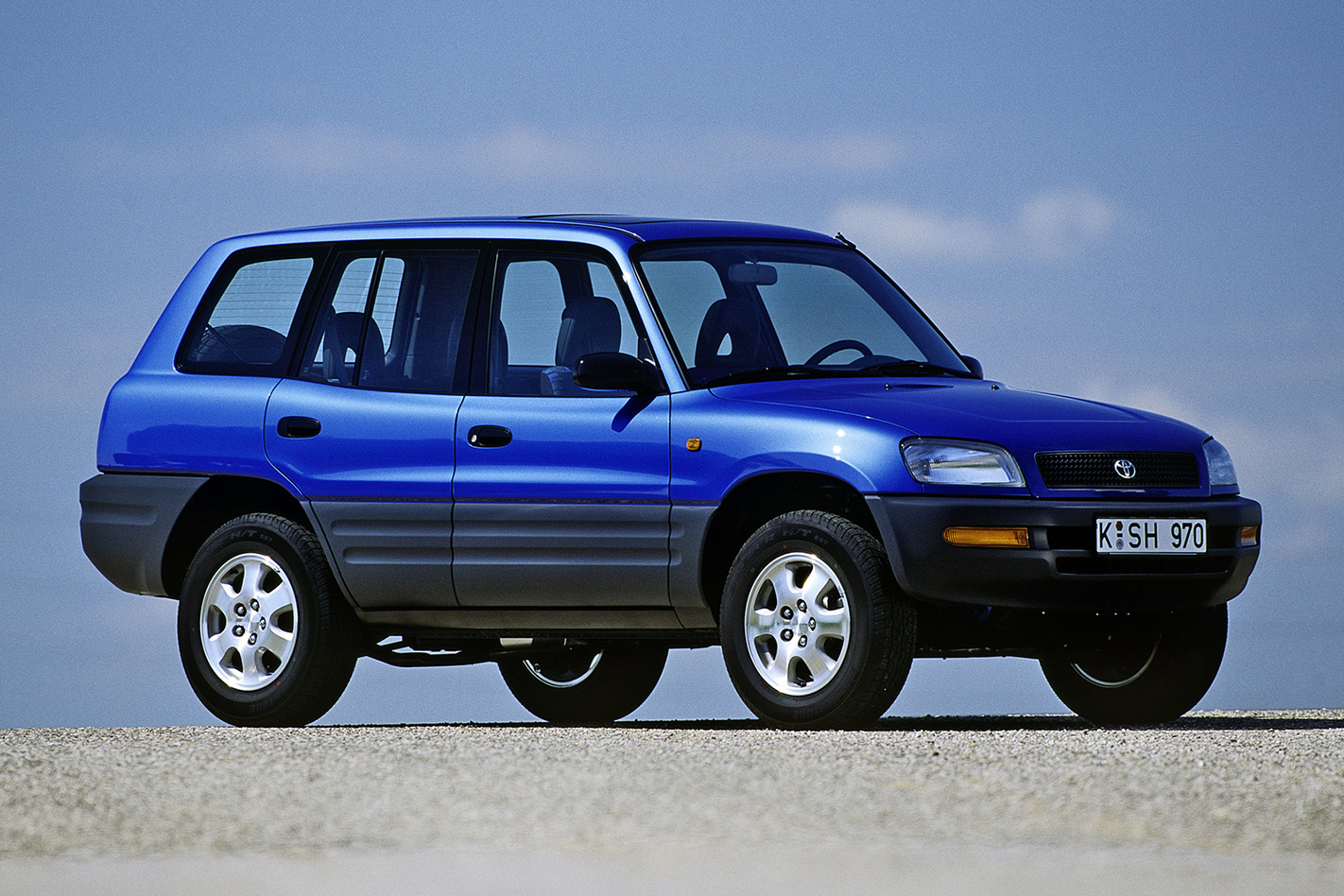
Toyota RAV4
The ongoing search for intelligent lifestyle Toyota may be seen as a slightly bland yet massively successful car company, but it has made bold moves in the past, like actually bringing the Prius to market.
Mostly, however, it has made smart moves. Like looking at the Suzuki Vitara, a compact SUV first launched way back in 1988, and realising that, if they made a vehicle the same size but less focused on actually going off-road, they’d have a phenomenon on their hands. The result was the RAV4, launched in 1994 and generally acknowledged as the first ‘crossover’ SUV, or soft-roader.
Just look at how many rivals it has now, from the Nissan Qashqai to the Subaru Forester, and you can see what a profound effect it has had on the market.
Toyota was smart enough to realise that jacking up a Corolla and putting some serious-looking plastic cladding on its flanks could be enough to open up a whole new market.
RAV4 stands for Recreational Activity Vehicle with 4-wheel drive. But part of its genius was that it was also offered with front-wheel drive, making the supposedly off-road tech an option you didn’t have to pay for if you knew damn well you’d never use it.
The RAV4 has grown, and grown less ugly, over the years, but its longevity is another marker of what a stand-out vehicle it has been.
PLUS: High driving position and illusion of ruggedness makes it extremely popular with female buyers. MINUS: All the world’s soft SUVs only exist because of the RAV4. Could we have lived without them? Yes.
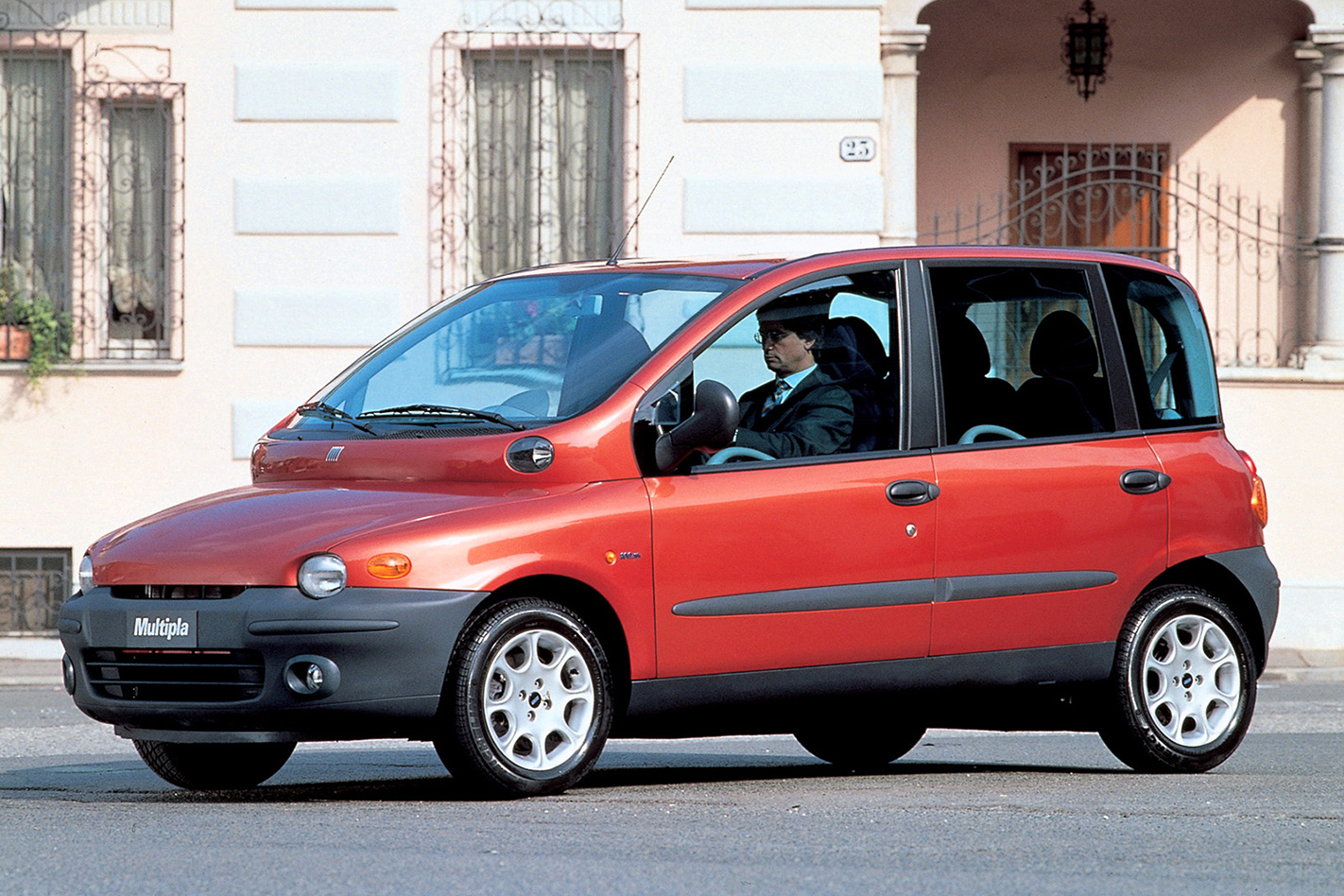
Fiat Multipla
Never mind the quality, feel the width Fortunately it was never sold here, because someone at Fiat was wise enough to realise it would have had a negative sales impact. Apparently just looking at the Multipla can make you feel unkind about the whole brand.
The five-door Multipla didn’t so much break the MPV mould as melt it, but only a ‘lucky’ few people at Wheels have driven one.
The two rows of three seats, so that the driver sits in a jolly trio up front, was an unusual way of tackling the space race, but this also made it look quite wide.
What’s hard to understand is why the designers then decided to add some ‘flourishes’ that make the Multipla look like it was based on the kind of creatures only found at the bottom of oceanic trenches.
Surprisingly, it did appeal to some aesthetes and was even put on display at the Museum of Modern Art in New York in 1999, but then that museum also once featured a woman sitting in a chair for 750 hours.
Those who’ve been in a Multipla have actually been quite complimentary about how it drives, and how practical it is, but then being inside a Multipla is the best way to appreciate it, because you can’t see it from there.
Italians loved the car, of course, because it’s a Fiat, and you’ll see plenty of them zipping around Rome, spoiling the views.
Global dominance did not result, however, and the car’s quirky three-plus-three interior is also yet to be widely taken up by other brands as a common passenger configuration. Still, the fact that it managed to sell from 1998 to 2010 is proof that quite a lot of people genuinely don’t care what their car looks like.
PLUS: Very useful for taxis (though it’s uncomfortable to sit so close to the driver) and people with four children. MINUS: Fiat stylists, take a bow. There really isn’t a single thing you could do to make it look uglier.

Honda NSX
Even better than a Ferrari 348. No, really THE Japanese, under-achievers that they are, contributed nothing to the world of Impressionist Art, and they’d probably argue that it was more of a European thing. But then the same could have been said for making exotic, alarmingly quick supercars, until Honda let off the rocket that was the NSX in 1990.
It’s not just the fact that this low-slung, sexy, V6-powered Honda halo car was good for its time, either. Talk to anyone who’s driven one and they still get starry-eyed today over how fabulous it was to steer. This is because a Japanese company boldly chose, for the first time, to try and do what Ferrari was doing, but do it better, cheaper and with something called ‘reliability’ built in.
There were plenty of firsts for Honda, of course, like the cab-forward F16 jet-inspired design, an all-aluminium monocoque, electric power steering and electronic throttle control.
What it did most brilliantly, however, was tap into Honda’s Formula One credibility, to give it the kind of cool that a supercar needs to compete in Rich World.
There was plenty of talk about Ayrton Senna’s involvement in the proving process; he reportedly asked them to stiffen the chassis after early tests, and was then given three NSXs to drive around and be photographed in after its launch.
Sadly, even Honda hasn’t followed its own groundbreaking lead since the NSX stopped production in 2005. But a new one is finally on the way and should be on sale here next year, powered by a twin-turbo V6 hybrid with a nine-speed twin-clutch transmission. It might just change the supercar rules again.
PLUS: Japan takes on the world, and gives it a damn good fright. MINUS: Why has it taken so long to replace such an indispensable brand icon?
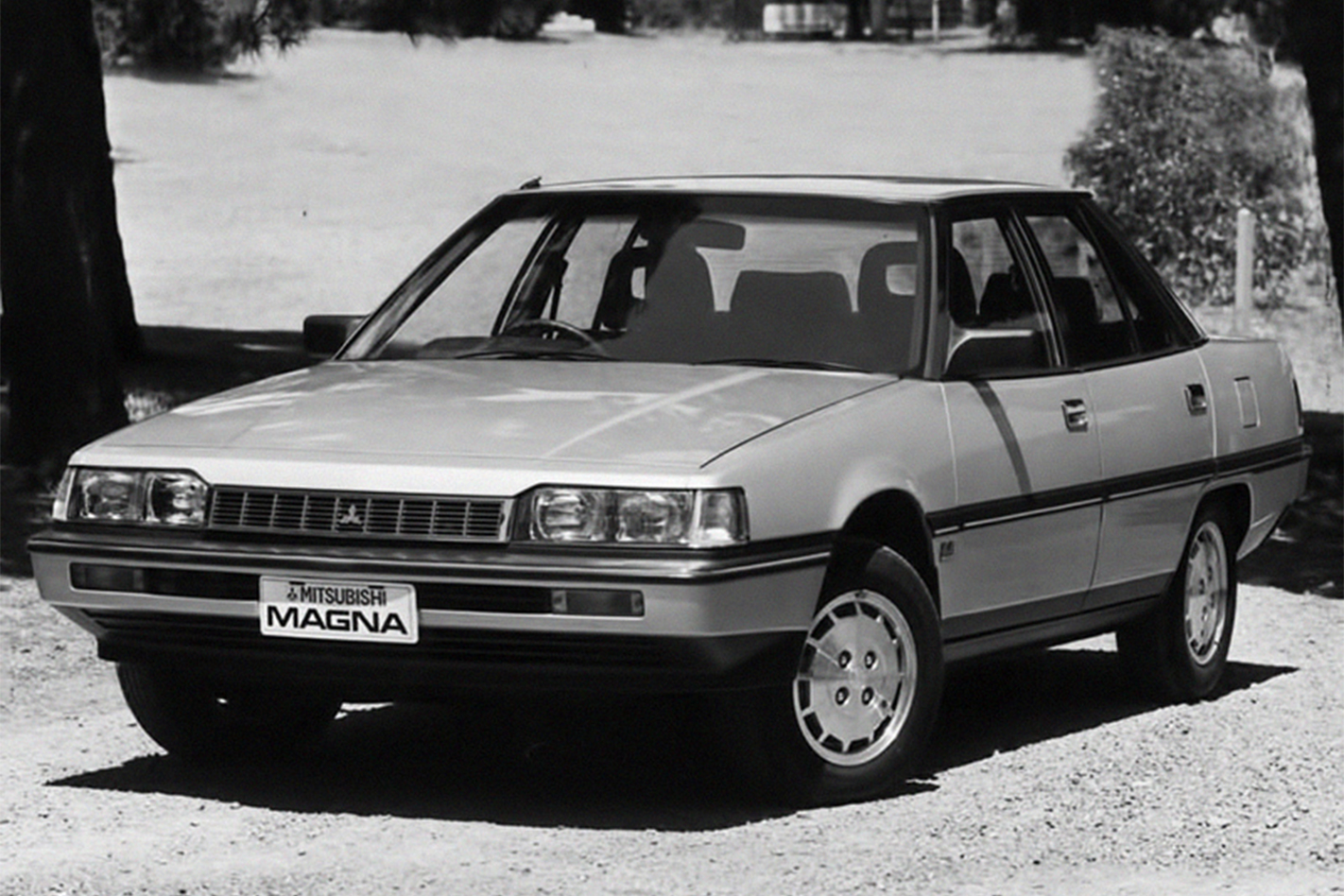
Mitsubishi Magna
Or how to get suckered by Japan’s Trojan horse IT’S probably not so popular any more, but plenty of people used to play The Magna Game on long trips. Basically, as you set off, each of you tips how many Magnas you’ll see between points A and B, and the closest wins. I remember successfully predicting we’d see more than 60 between Canberra and Sydney.
But the Magna didn’t just break the mould by splitting the sales dominance of Holden and Ford; it was more important than that.
Conceived in sneaky South Australia, it was the world’s first wide-bodied, medium-sized sedan, and was quickly copied by Toyota with its Camry, which went on to dominate the American market and help to sink Aussie-built Commodores and Falcons.
Yes, the Magna is essentially to blame for everything.
But let’s not forget, as much of a simile for bland and common as the Magna became, it was a big leap forward when it was launched in 1985.
Magna replaced the Chrysler Valiant and the size-smaller Sigma as Mitsubishi’s family car offering, and used both its front-drive layout and the extra 66mm of width it spliced into the Galant sedan’s body to create a competitively roomy cabin.
Mitsubishi Australia then went after its rivals on price, and when you could get a better-specified, more economical and refined package from the Japanese for less money than a Holden or Ford, plenty of people said a brusque farewell to tradition.
And suddenly Magnas were everywhere, filling our roads for 20 years, until Mitsubishi broke the rules again with the impressive 380. Sadly, Aussies didn’t show it the same love.
PLUS: Utility, refinement, quality, the Magna had it all, and it made everyone else work harder to compete. MINUS: Driving the competent Magna was never about excitement, so the Camry really did copy its essence.
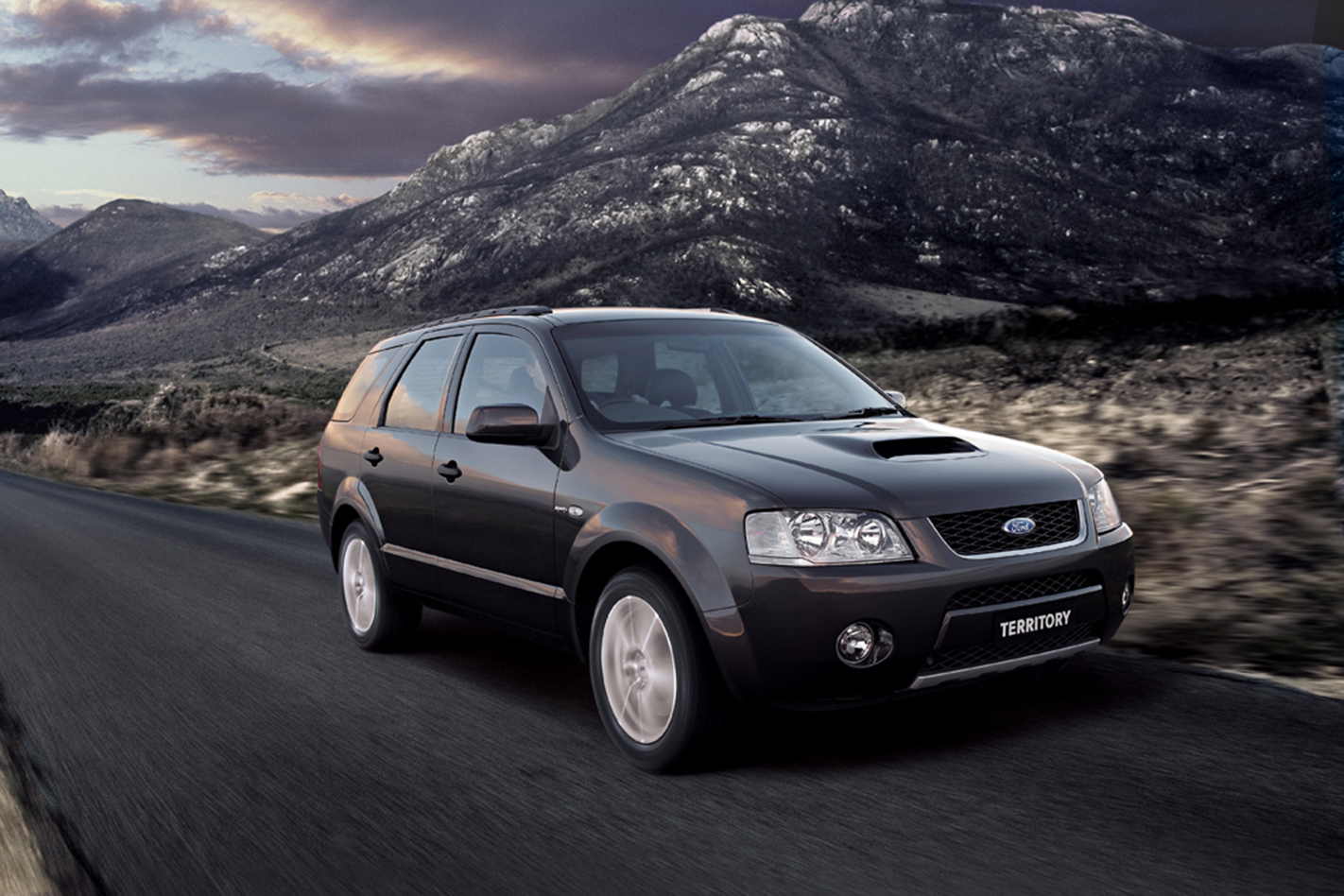
Ford Territory
Terra Australis shows how it’s done WHEN something becomes entirely ubiquitous, it’s easy to forget what the world was like before it arrived.
Families used to buy station wagons to haul kids, dogs and surfboards, but today’s soccer moms are a foot taller, at least in traffic, because they drive SUVs. The car that changed the playing field was the Ford Territory, which launched in 2004 and went on to win that year’s Wheels COTY, the first SUV to do so.
But that’s how good the Territory was, what a leap ahead it was for this kind of vehicle. In the past, choosing an SUV meant trading more space for less driver enjoyment and involvement. Rough ride, rattly engines and sloppy steering were the median expectations.
Yet straight out of the box, the Territory drove like a Falcon and was genuinely well designed, with an interior modeled on a Swiss army knife, according to Ford. It was also the first locally built car to have an electronic stability system.
Ford spent $500 million on bringing the Territory to market, and did a truly great job of creating a car built for Australian conditions and families (and one, importantly, that women would want to buy and drive).
Perhaps one of the Territory’s most impressive tricks, though, was its timing. It might have been seen as a risk by some, but it managed to arrive at just the right time to take advantage of the move up into SUVs by local buyers. The Territory was the right car at the tight time in the right place and at the right price.
PLUS: Territory excelled with its passenger room, engines and car-like driving manners. MINUS: After next year, we won’t be making this deservedly popular car any more.
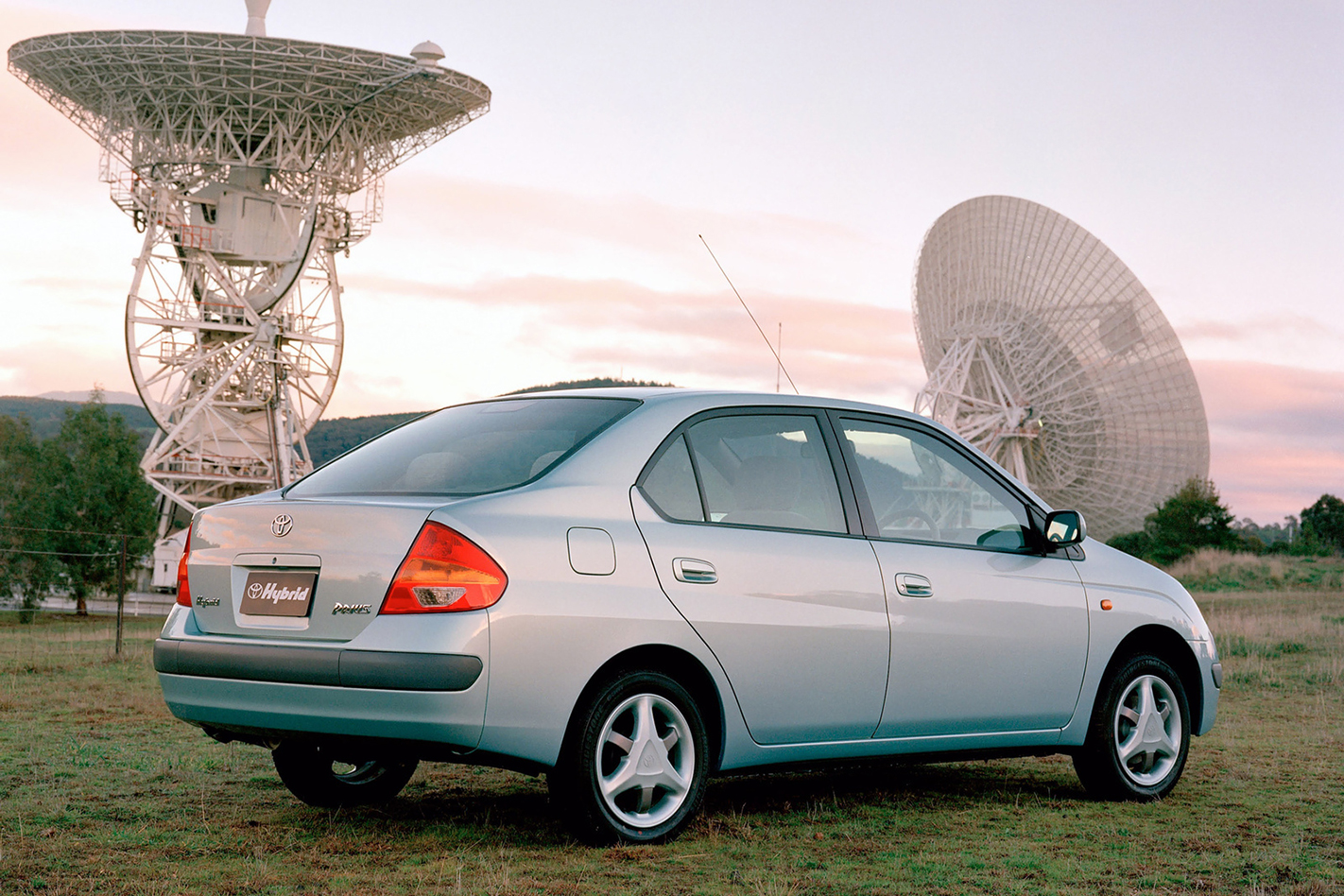
Toyota Prius
Clooney, di Caprio, you. Pick the odd man out IT HAS inspired the spilling of plenty of bile, with its asthmatic performance and the fact that it seems to have been styled to look like a boot heel, but there’s no denying that Toyota’s Prius has been a world-changing vehicle.
Its looks and slightly nerdy hybrid technology should have made it the shunned kid in the schoolyard from the moment it was launched in 1997. The Japanese loved it, though, and still do, and this emboldened Toyota to take it to the world, and the US in particular.
Initial reviews of its 13-second 0-100km/h performance were not positive in America, but then something remarkable happened. Many of Hollywood’s richest and coolest celebrities started buying Priuses, partly to look green and planet-friendly, but also because they came with a sticker that let you drive in Los Angeles’ Express Lanes, even if you weren’t carrying any passengers.
Once Americans saw that famous people were driving them, it was all gravy for Toyota. The Japanese carmaker recently racked up seven million hybrid sales worldwide. The Prius accounts for nearly half that total, with more than 3.36 million now sold. In Japan, hybrids now make up 40 percent of all sales, while globally they’re at 15.2 percent and growing.
The Prius, which is also regularly bought by many of your fellow Australians, takes responsibility for starting all that. Love it or hate it, you have to at least admire it.
PLUS: Saving the planet, one slow, quiet and boring drive at a time. MINUS: The styling’s still parked a long way from pretty. Perhaps a postcode away.
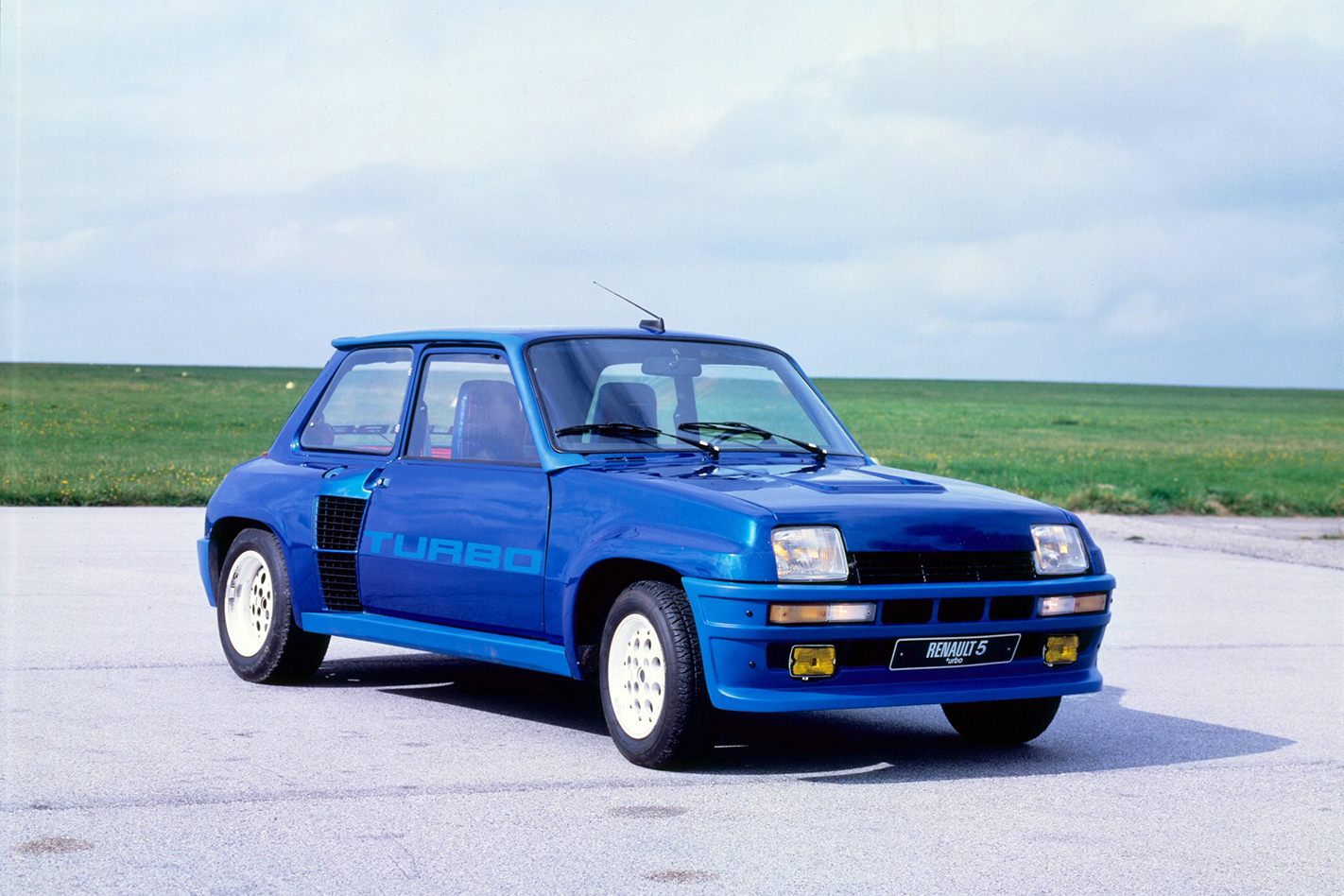
Renault R5 Turbo
Mixed martial arches WITH cars like the VW Golf R posting sub-five-second sprints to 100km/h, you might think that the hot-hatch world is fairly insane right now, but it’s simply following its own rich tradition.
The deranged hatch was born in 1980 with the unveiling of the genuinely intimidating Renault R5 Turbo. With wheelarches so massive you could shelter baby elephants under them, it looked as crazy as what it actually was – a rally car that had been mildly modified so it could be sold for the road.
A 1.4-litre turbocharged engine was wedged in behind the driver for ideal, mid-engined sportiness, which required considerable fiddling of the standard, front-engined Renault 5. That was just the start of what the berserkers at Renault’s motor sport division were asking for, however, because they also wanted the Turbo to be rear-wheel drive rather than the standard FWD.
Marcello Gandini, the man who penned the Countach, was responsible for the radical styling, while outputs were a then-impressive 118kW and 221Nm, in a car that weighed just 970kg. The result was a then outrageous 0-100km/h time of just 6.6sec, a top speed of 200km/h and absolute legend status in the world of hot hatches.
Renault, which now makes some very fine modern cars of this genre, was even crazy enough to try to reinvent the R5 with the Clio V6.
The excellent RS Megane can trace its lineage back to the R5 Turbo, but then just about all of its hot-hatch competitors should tip their hats to it as well.
PLUS: Motor sport madness for the road; created a genre that’s still going strong today. MINUS: Only 3756 examples were built during four years in production, which makes them exceedingly rare.
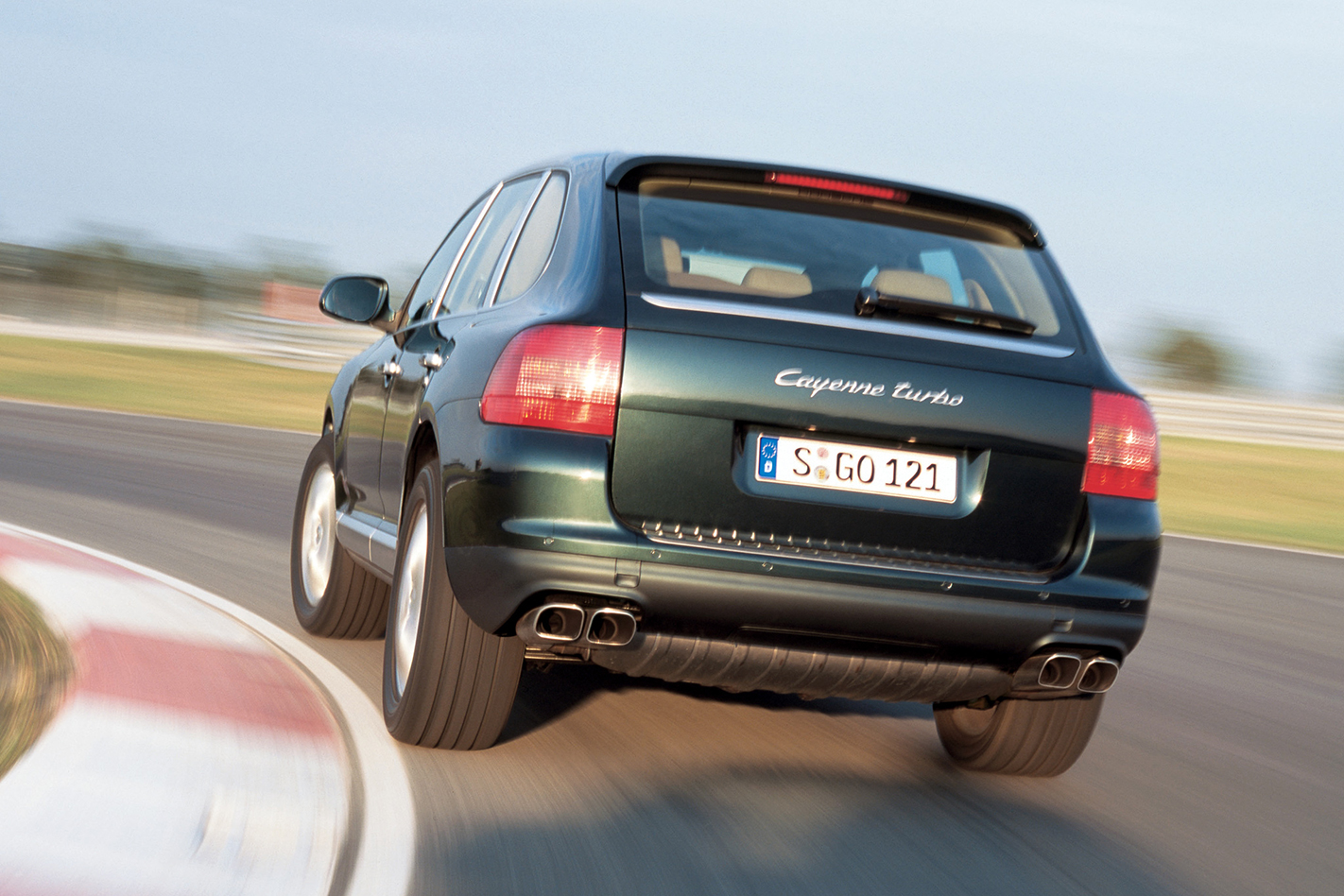
Porsche Cayenne
Turn on, tune in, sell out PEOPLE mostly forgave Porsche for the Boxster because it was great to drive and, if selling its badge value for a lot less money was an evil, it was a necessary one. But the company’s next big financial play – getting into bed with Volkswagen to produce the Touareg/Cayenne SUVs – was significantly harder for purists to swallow.
Here was a company famed for connecting drivers with the road, partly by putting their butts just inches from it, for sportiness and handling and sex, and for Coke-bottle proportions. Suddenly it was trying to sell the world on the idea that SUVs, despite their obvious centre of gravity disadvantages, could be Porsches, too.
The wailing and gnashing of teeth from the brand’s fans must have been audible within the high, white walls of the Stuttgart HQ, but for the rigorously realistic financial hard-heads who run this powerhouse of a company, it was simply a choice, and a car, that had to be made.
Those who hated the Cayenne, more for the greed it stood for than being a bad car, can whinge and opine all they like because it not only kept the company alive, it made it hugely profitable. And at least some of that money then drips down into making 911s, Boxsters and Caymans even more marvellous.
With the addition of the smaller Macan, Porsche is now predominantly an SUV company with a nice, profitable sideline in sports cars, and that’s thanks to the physics-defying machine that is the Cayenne.
PLUS: Brought Porsche ownership to families and made the company hugely wealthy. MINUS: The 911 used to define what Porsche was about. Now the Cayenne does.
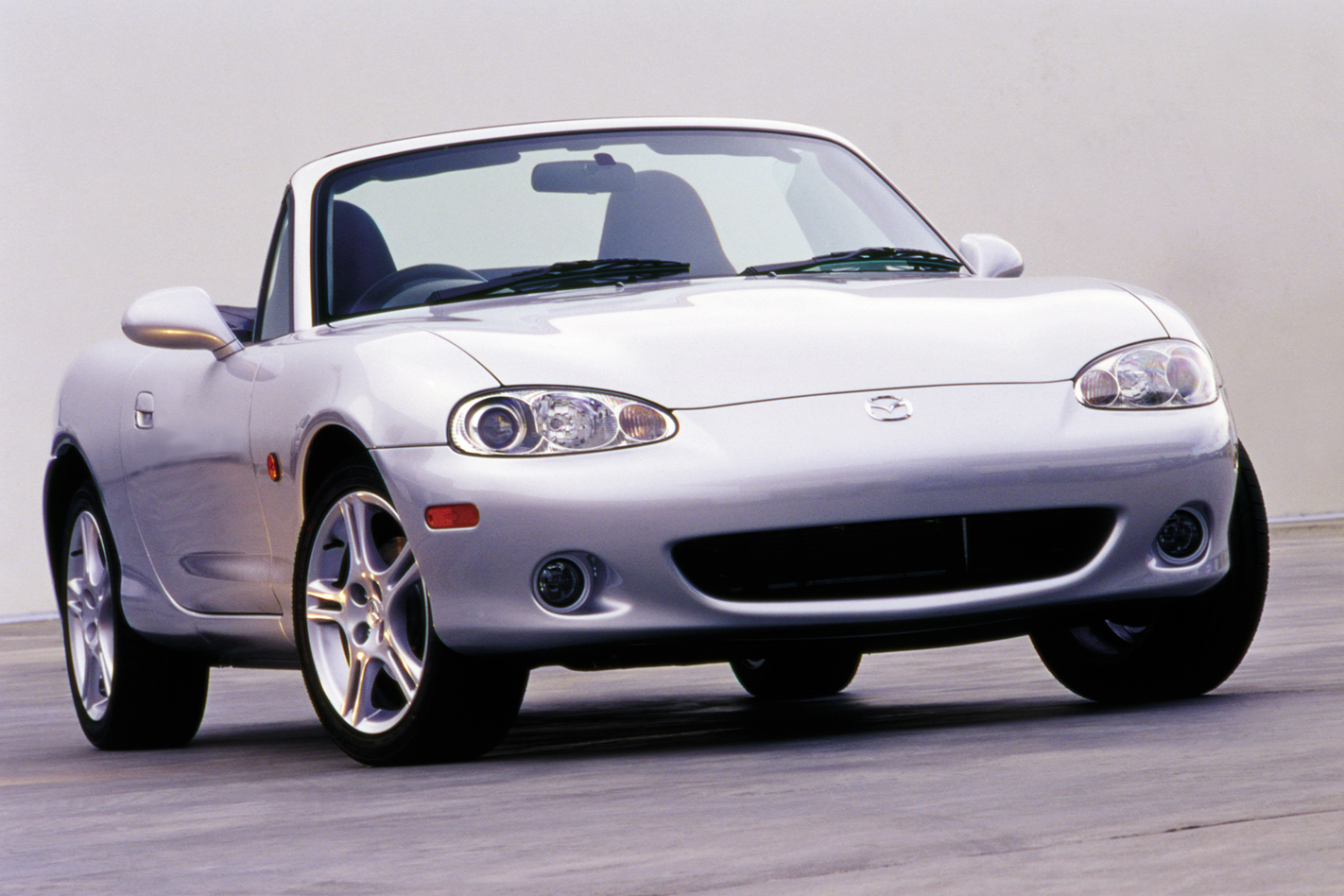
Mazda MX-5
Hiroshima channels Hethel. Hiroshima wins AS A concept, you could say the MX-5 merely perfected or popularised a formula established by cars including the Lotus Elan, Alfa Romeo Spider, Triumph Spitfire and MGB. It definitely broke the mould for Mazda, though, providing the company with a halo car that’s still sprinkling fairy dust over the whole range today, 26 years on from its unveiling.
More than that, though, and more than the roadsters that pre-dated it, the MX-5 proved that a vehicle built purely for fun, with the ideal front-engine, light-weight, rear-drive, short-throw shift approach, could be a mass-selling proposition.
The car now holds a place in the Guinness Book of Records as the biggest-selling roadster of all time, with sales certain to go past the one-million mark when the all-new, and arguably best looking, iteration starts shifting units later this year.
There are also few cars with such a fanatical following of believers, who love nothing more than to spout stuff about the car’s Jinba Ittai philosophy (horse and rider as one). MX-5 owners’ clubs proliferate around the world and even the older cars, with their cutesy, smiley styling, are collector’s items.
What’s most important about this nimble, humble little Mazda is that it’s simple and simply wonderful to drive, and that the years haven’t really changed its original approach that much.
It’s a proper, affordable sports car for the everyman, and just about every man would like to own one.
PLUS: The purity of rear-drive, lightweight fun in a reasonably priced package that’s pleasant to look at. MINUS: It’s never been as fast as it could be, and the hardtop lids on later versions mess with the weight equation.

